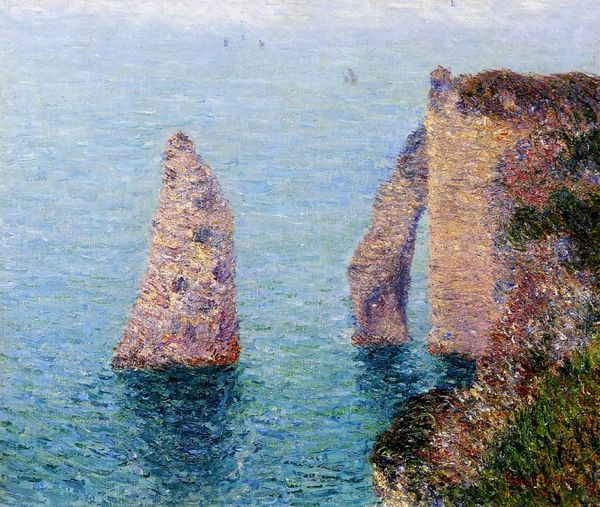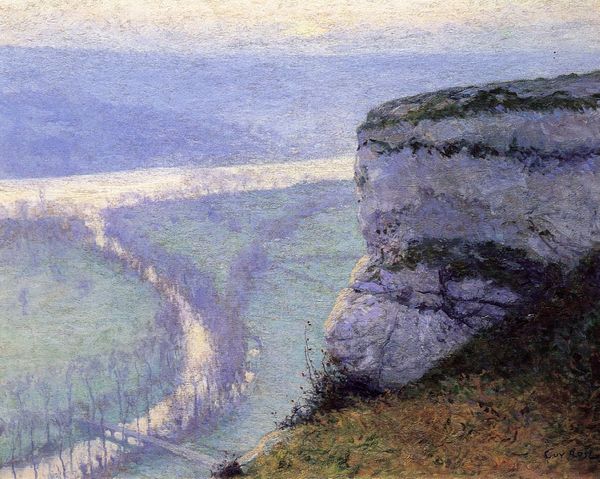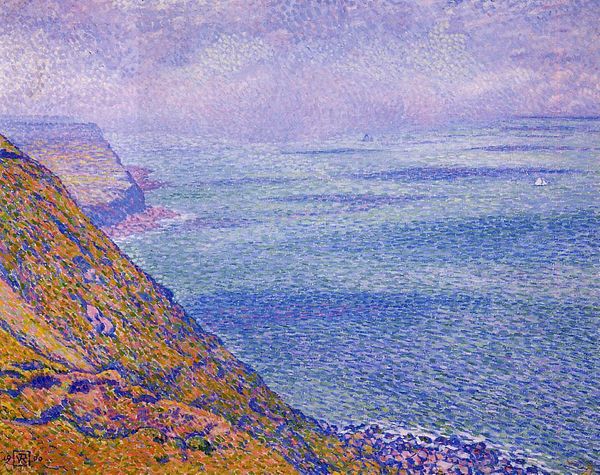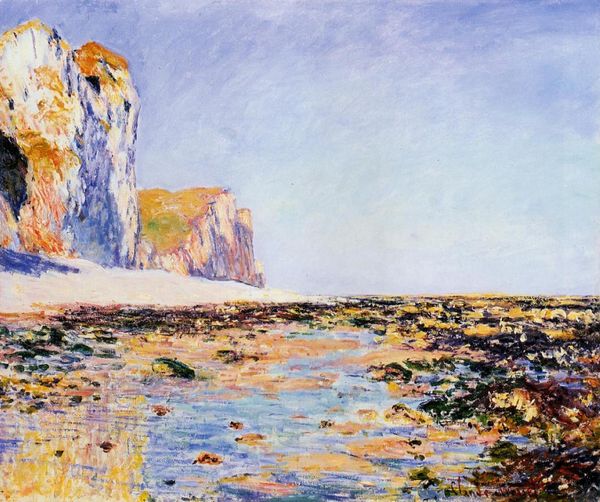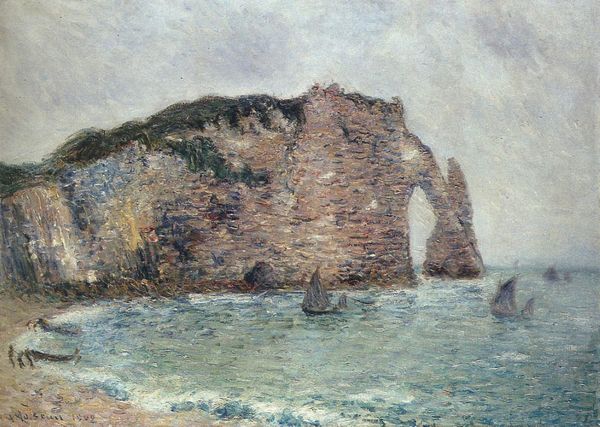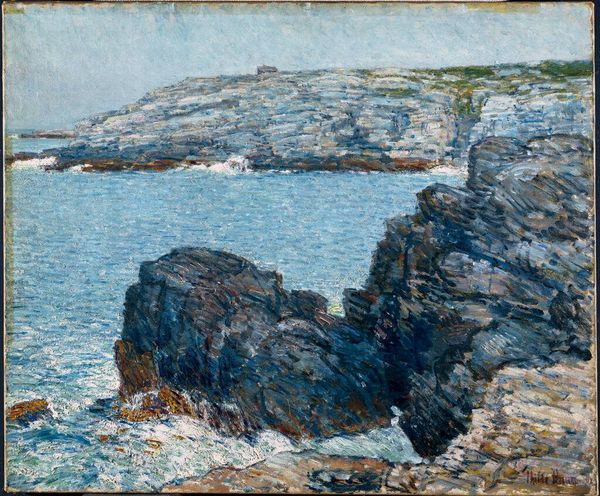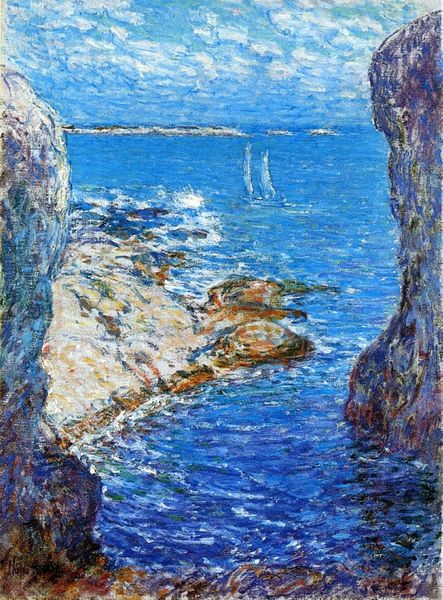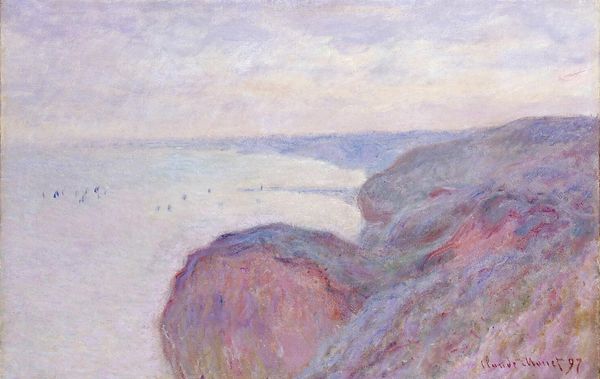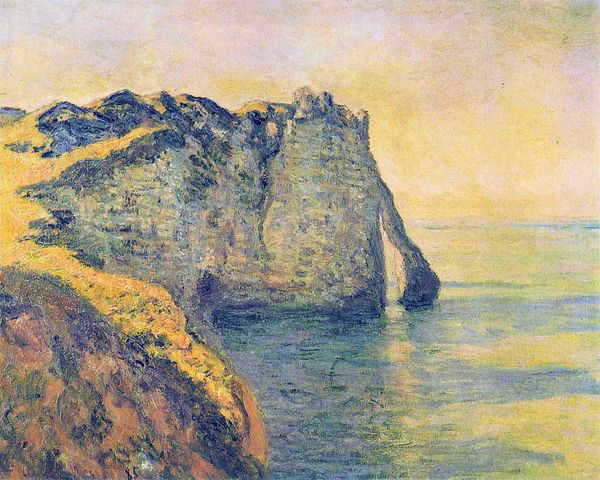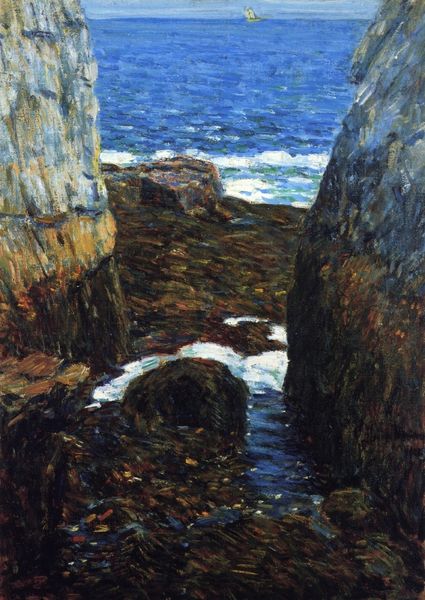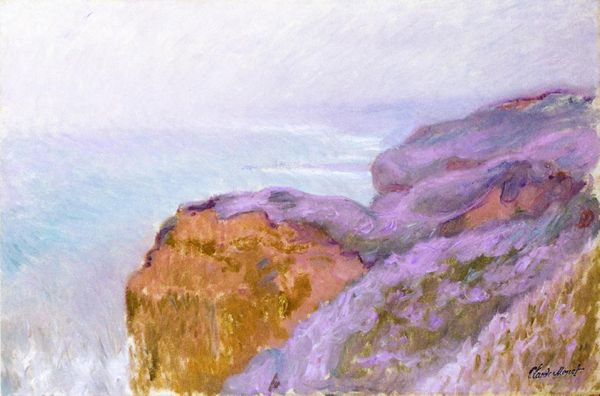
Copyright: Public domain
Editor: This is Gustave Loiseau’s “Etretat. The Battery Point,” painted in 1902 using oil paint, presumably en plein air given the subject. The cliffs loom so large, and the heavy impasto makes me think of manual labor, almost as if the painting itself was constructed like the cliffs it portrays. What catches your eye? Curator: The visible labor is precisely what fascinates me. Look at the materiality; Loiseau doesn't just represent the cliffs, he *builds* them with paint. Consider the conditions of production - painting outdoors, capturing the transient light. This wasn’t leisurely hobby painting. It involved transporting materials, battling the elements. It suggests a certain working-class grit embedded in the artistic process, which challenges that divide between art and craft. Editor: That's a compelling point. I hadn't really considered the physical effort involved. Does the location—Etretat—add to this material reading? Curator: Absolutely. Etretat was a site of both natural beauty and burgeoning tourism. Think about the social context. Who was consuming these landscapes? Was it the rising bourgeoisie, seeking picturesque views? Loiseau's rugged application of paint hints at the raw, untamed nature, perhaps resisting a purely romantic consumption of the landscape. It wasn't simply *selling* an image, it was offering a visceral engagement with a specific location. What implications did this represent to the working class? Editor: So it is like he's underscoring the physical reality beneath the beautiful facade, and revealing a bit about the economics of landscape. I’ll definitely rethink impressionism! Curator: Exactly. It’s not just about pretty colors, but the relationship of the art production process with material reality and social factors.
Comments
No comments
Be the first to comment and join the conversation on the ultimate creative platform.

